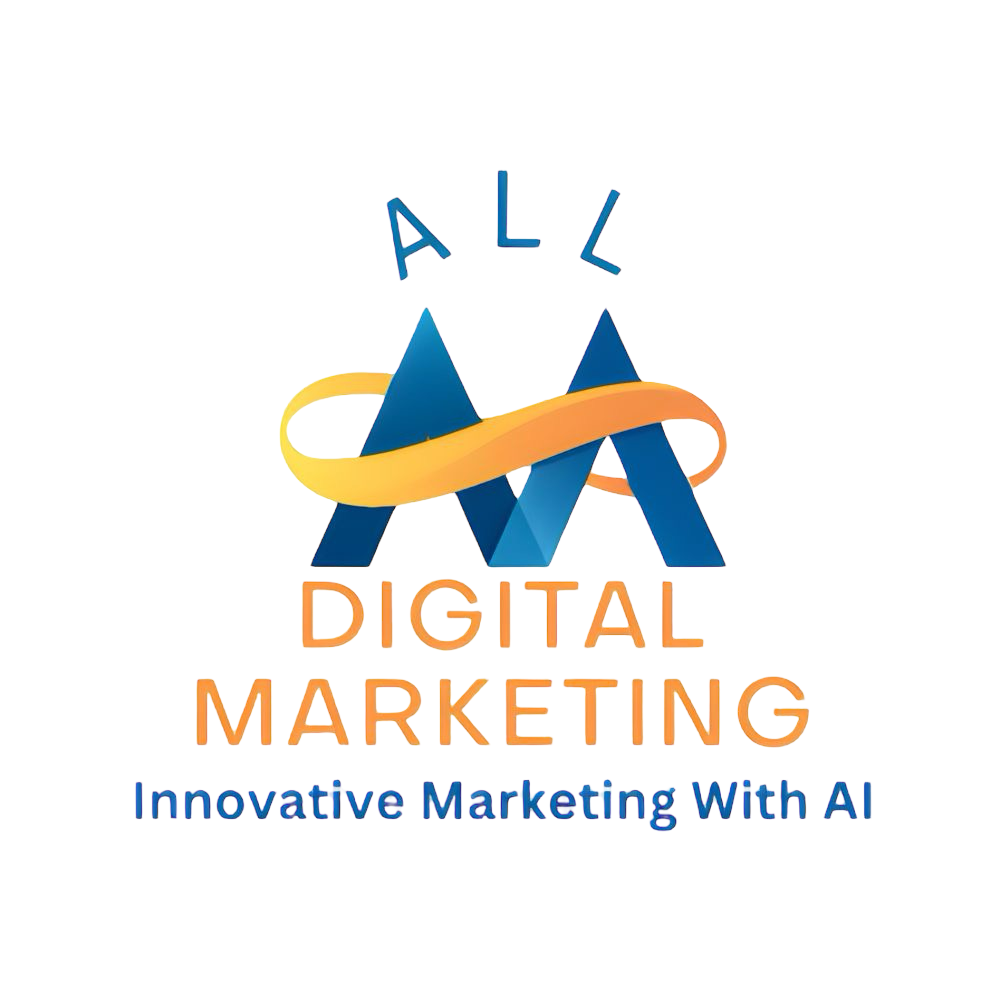You feel that knot of frustration in your stomach. You've poured your heart and soul into your website, but it just isn't showing up when people search online. It feels like shouting into a void while your competitors seem to have a megaphone. What if there was a way to truly understand what Google wants and give it to them, not just with complex jargon, but in a way that truly helps your business thrive? What if you could unlock the secret language of search engines and speak it fluently, turning those "how-to" questions into a chorus of "YES!" from your ideal customers? This isn't a fantasy; it's a real, actionable path to online success, and a surprising new ally is leading the way: ChatGPT.
Key Takeaways
ChatGPT is Your SEO Sidekick: Learn how this AI tool can analyze your website and suggest changes to make it more visible to Google and potential customers.
Headings Matter: Understand what H1, H2, and H3 tags are and why they are super important for both search engines and human readers.
Speak Google's Language: Discover how to use keywords effectively and naturally to help Google understand what your content is about.
Action Over Information: Move beyond just giving "how-to" advice and learn to create content that inspires readers to take the next step.
Local Love: See why a strong local online presence is a game-changer for businesses serving a specific area.
Consistency is Key: Learn why keeping your brand's voice the same across all your online content builds trust and recognition.

Your Website's Secret Weapon: How ChatGPT Can Skyrocket Your Google Ranking
Imagine for a moment that your website is a book. For Google to recommend your book to readers, it needs to quickly understand what it's about, how it's organized, and if it's truly helpful. That's where something called "SEO" (Search Engine Optimization) comes in. Think of SEO as the art and science of making your website appealing to search engines like Google, so when someone types in a question or a keyword, your website pops up as a top answer.
Now, meeting Google's demands used to be a highly technical job. But here's where things get exciting: a new tool called ChatGPT, an advanced Artificial Intelligence (AI) program, can help you decode Google's preferences and make powerful changes to your website with surprising ease. It's like having a marketing genius right by your side.
Understanding the Building Blocks of Your Website: H1, H2, and H3 Tags
Before we dive into how ChatGPT helps, let's talk about some fundamental parts of your website that Google pays close attention to: your headings. Think of these like the chapters and sub-chapters in our book analogy.
-
H1 Tag (Heading 1): Your Book's Title.
This is the most important heading on any page of your website. Each page should only have one H1 tag. It tells Google and your readers, in plain terms, what the main topic of that page is.
Example: If your page is about "The Best Ways to Train Your Puppy," your H1 tag might be:
<h1>The Ultimate Guide to Puppy Training</h1>. It's clear, it's specific, and it tells everyone what to expect.
-
H2 Tag (Heading 2): Your Chapter Titles.
H2 tags break down your main topic into bigger sections. They help organize your content, making it easier for both readers and Google to understand. You can have several H2 tags on a page.
Example: For our puppy training guide, H2 tags could be:
<h2>House Training Your Puppy</h2>or<h2>Basic Obedience Commands</h2>. These are the big ideas within the main topic.
-
H3 Tag (Heading 3): Your Sub-sections within Chapters.
H3 tags dive even deeper, breaking down your H2 sections into smaller, more specific points. They provide even more structure and clarity. You can have many H3 tags under each H2.
Example: Under
<h2>House Training Your Puppy</h2>, you might have H3 tags like:<h3>Crate Training Tips</h3>or<h3>Dealing with Accidents</h3>. These break down the larger "house training" chapter into manageable pieces.
Why are these headings so important?
For Google: Headings help Google's "spiders" (little computer programs that crawl the web) quickly figure out what your page is about and how important each piece of information is. When your headings use important keywords, Google connects your page to what people are searching for.
For Your Readers: Imagine trying to read a textbook without chapters or subheadings – it would be a jumbled mess! Headings make your content easy to skim, understand, and find specific information. This keeps people on your site longer, which Google loves.
The Power of Keywords: Speaking Google's Language
Keywords are simply the words and phrases people type into search engines when they're looking for something. They are the bridge between what your audience wants and what your website offers.
-
Finding the Right Questions (Keyword Research): Before you even start writing, you need to know what questions your potential customers are asking. Tools like Google Keyword Planner (a free tool from Google), AnswerThePublic, Ahrefs, or SEMrush help you find these "high-volume" keywords – meaning lots of people are searching for them.
Example: A pet store owner might use these tools and discover that people are frequently searching for "What's the best food for a new puppy?" or "How to stop a puppy from biting." This tells them exactly what kind of content their audience needs.
Pro Tip: Type your main business topic (like "plumber" or "local bakery") into Google and scroll down to the "People Also Ask" (PAA) section. This is a treasure trove of real questions your customers are typing!
-
Answering Clearly and Concisely (Featured Snippets): Google loves quick, direct answers. For those "People Also Ask" boxes and "Featured Snippets" (the little boxes at the very top of Google results that give a direct answer), aim for answers that are around 40-60 words.
Example: If the question is "How to choose a yoga studio?", a great, concise answer might be: "Look for certified instructors, clean facilities, and beginner-friendly classes. Always check reviews and visit the studio to experience the atmosphere firsthand."
-
Optimizing Your Content: Once you have your questions and answers, place the question as an H2 or H3 heading, followed by your clear answer. Naturally include your main keywords and related terms.
Example: A blog post titled "Top 5 Questions About Yoga Studios Answered" could have a subheading like:
<h2>What Makes a Great Yoga Studio?</h2>followed by the answer.
-
Structured Data (Schema Markup): This sounds technical, but it's like putting a special label on your content that tells Google exactly what it is. For FAQs, you can add "FAQ schema markup" – a bit of code that tells Google your content directly answers questions. This dramatically increases your chances of showing up in the PAA section.
Example: A dentist adding FAQ schema to a page answering "How often should I visit the dentist?" can directly lead to their answer appearing in Google's PAA section.

See How Digital Marketing All Can Drive More Traffic to Your Website
You're seeing how all these pieces fit together to make your website a magnet for customers. But mastering all these strategies takes time and expertise. That's where a dedicated marketing team becomes your secret weapon.
Brand Voice Strategy: Let our team help you create your unique brand voice to attract your ideal customer. It's about how you sound, how you connect, and how you make people feel.
Market Growth Opp Research: Let our team show you where you can gain additional traffic that you are missing. We uncover hidden opportunities for your business to shine.
Local SEO: Unlock more SEO traffic. See real results. Dominate your local market. We ensure your business is easily found by local customers looking for your services.
Dominate Google: Let us get your company to the top of Google. We implement strategies designed for top rankings.
Competitive Link Analysis: Know what your competitors are doing. We dissect their strategies to find your edge.
Geo-Targeting: Let us find your customers in your desired location. We pinpoint where your ideal clients are searching.
Content Marketing: Our team creates epic content to be shared, generate links, and attract traffic. We know the secret recipe for success. This includes blogs, articles, and more!
Paid Media Advertising: Effective paid strategies with clear ROI. You pay per result with us. We get you in front of your audience fast.
Blogging Services: Let us create a blog that will help you rank. Our expertly written blogs are designed for Google and engagement.
Search Box Optimization: Owning a keyword in your local area is the best way to dominate your local market. We help you literally "own" the search results.
Search Price Optimization: Not only can you own the keyword in your local area and nationally, but you can control your advertising cost by getting out of the price war that exists in pay-per-click advertising and achieve a higher ROI.
Marketing Consulting: Develop tailored strategies to grow your brand and maximize impact.
Enter ChatGPT: Your AI SEO Analyst
Here's where the magic of AI, specifically ChatGPT, comes into play. While ChatGPT can't directly "crawl" your website like Google does, you can feed it your website's content, and it can act like an incredibly smart marketing consultant, suggesting improvements.
"The future belongs to those who learn more skills and combine them in creative ways." - Robert Greene
Here's how you can leverage ChatGPT to analyze your website's headings and boost your Google ranking:
-
Feeding ChatGPT Your Content:
Start by copying and pasting the full text of a specific page from your website into ChatGPT.
Then, give it a clear instruction. For example: "Analyze the following web page content. Identify the current H1, H2, and H3 tags. Then, suggest improvements for these tags to help this page rank higher on Google for the keyword [Your Target Keyword]."
Example: For a local landscaping business, you might copy their "patio design" page and ask: "Analyze this page's content. Identify current H1, H2, H3 tags. Suggest improvements for these tags to rank higher for 'custom patio design services in [Your City]'."
-
Getting ChatGPT to Identify and Explain Current Headings:
ChatGPT will then go through your content and tell you exactly what it identifies as your main headings. It will even explain why certain phrases are likely acting as an H1, H2, or H3 based on their placement and formatting.
Example Output from ChatGPT: "I see your current H1 is 'Beautiful Patios for Your Home.' Your H2s include 'Designing Your Dream Patio' and 'Patio Installation Process.' I also see H3s like 'Choosing the Right Materials' and 'Steps to a Perfect Patio.' "
-
ChatGPT's Recommendations for Improvement:
This is where ChatGPT shines. Based on its vast knowledge of how language and keywords work, it will suggest changes to your headings.
-
Focus on Keywords: It will recommend including your target keywords (like "custom patio design") more naturally and prominently in your headings.
Instead of: "Our software has 50 different tools"
Try: "Imagine cutting your workload in half and doubling your productivity with our intuitive software."
Clarity and Specificity: It will help make your headings super clear so both Google and humans instantly know what each section is about.
-
Emotional Triggers: ChatGPT can even suggest tweaks to your headings that appeal to desires like success or ease.
Instead of: "Learn to close deals."
Try: "Picture yourself closing deals effortlessly, becoming the top performer in your company."
Action-Oriented Language: It will help you move away from just telling people "how to" do something and instead inspire them to take action.
Example Recommendation: "Your H1, 'Beautiful Patios for Your Home,' is nice, but it could be stronger. Try something like:
<h1>Custom Patio Design & Installation in [Your City]: Create Your Outdoor Oasis</h1>. This includes your city, which is great for local searches, and uses stronger keywords like 'design' and 'installation.' For your H2 'Designing Your Dream Patio,' consider<h2>Your Journey to a Dream Patio: From Concept to Completion</h2>to add a sense of process and excitement."
-
Beyond Headings: ChatGPT's Broader SEO Insights
You can also ask ChatGPT to provide insights into other aspects of your content that influence ranking.
Keyword Density: While not a strict rule, including your keywords a few times naturally throughout your content helps Google understand your topic. ChatGPT can advise if you're using your keywords too little or too much.
Long-Tail Keywords: These are longer, more specific phrases (e.g., "best durable dog food for golden retrievers"). ChatGPT can suggest these, helping you capture niche searches.
Semantic Keywords: These are related terms and synonyms (e.g., for "car," semantic keywords could be "automobile," "vehicle," "sedan"). Using these helps Google understand the full context of your page.
Real-World Success Stories Fueled by Smart Tagging
Let’s look at real examples to spark inspiration:
Local Coffee Shop: A Seattle café optimized for “What’s the best coffee shop in Seattle?” with a blog post highlighting their unique roasting process. They used ChatGPT to refine their H1 to
<h1>Discover Seattle's Best Artisan Coffee: Our Unique Roasting Process</h1>and saw a 15% increase in foot traffic within a month, largely due to a Featured Snippet appearance.Fitness Coach: A personal trainer answered “How to start a fitness routine at home?” with a 50-word snippet and a motivational story about a client’s transformation. Their H2 became
<h2>Unlock Your Home Fitness Journey: Client Success Stories</h2>. Their site appeared in PAA, driving 200 new sign-ups in three months.Plumber’s Triumph: A local plumber targeted “How to unclog a drain without chemicals?” with a clear, step-by-step answer. Their H1 was refined to
<h1>Effortless Drain Unclogging: Chemical-Free Solutions for Your Home</h1>. Their PAA appearance led to a 25% boost in service calls.
Balancing Information and Inspiration
While we're moving away from pure "how-to" content, it's still important to provide value. The key is finding the right balance:
Offer a taste of your expertise without giving away the entire recipe. Think of it as a compelling trailer for a great movie.
Present challenges and pain points, then position your solution as the answer. Show them you understand their struggles.
Use storytelling to make complex concepts relatable and engaging. People remember stories far more than dry facts.
FAQ
Q: What is SEO? A: SEO stands for Search Engine Optimization. It's the process of making your website more visible on search engines like Google, so more people can find your business when they search for things related to what you offer.
Q: How does ChatGPT "analyze" a website? A: You provide ChatGPT with the text content of your website pages. ChatGPT then uses its advanced understanding of language to read through your content and identify patterns, keywords, and structural elements like headings, just like a human expert would. It then uses this information to suggest improvements based on common SEO best practices.
Q: Can I use ChatGPT to write all my content? A: While ChatGPT is an amazing tool for generating ideas, outlines, and helping with optimization, it's still best to have a human touch. Your unique brand voice, personal experiences, and deep understanding of your customers are irreplaceable. Think of ChatGPT as a powerful assistant, not a replacement.
Q: How often should I update my website's headings? A: It's a good idea to review your website's content and headings periodically, especially if you notice your rankings are slipping or if your business offers new services. Google's algorithms are always evolving, so staying on top of your SEO is an ongoing process.

Your Launchpad to Content Greatness
Crafting the perfect conclusion isn't just about wrapping up your thoughts—it's about propelling your readers into action. You've now seen how powerful the right words, in the right place, can be for your business. You've also glimpsed the amazing potential of combining your expertise with the cutting-edge capabilities of AI like ChatGPT.
Remember, the most effective conclusions don't just summarize—they synthesize, inspire, and motivate. They transform passive readers into active participants in the narrative you've woven throughout your post. You have the power to not just inform, but to ignite a "YES!" within your audience. So, the next time you're wrapping up a blog post, ask yourself: "How can I make this conclusion a launchpad rather than a landing pad?" Your readers—and your content strategy—will thank you.
I hope you enjoy reading this blog post. If you want to be our next success story, have my team do your marketing. Click here to book a call!
 Add Row
Add Row  Add
Add 








Write A Comment